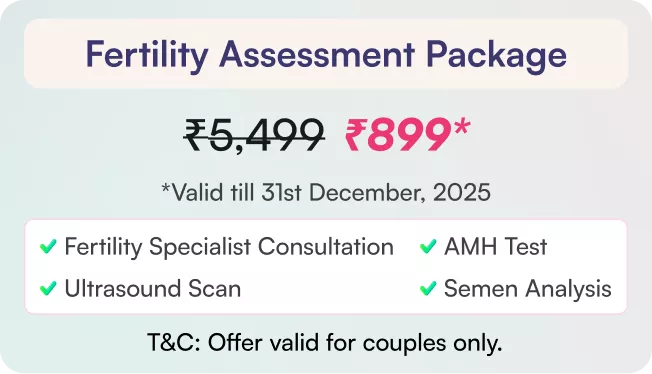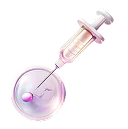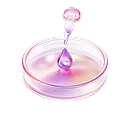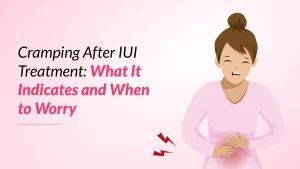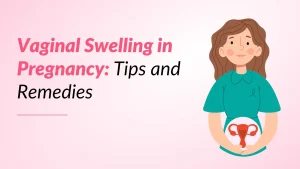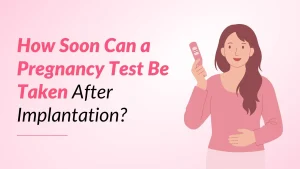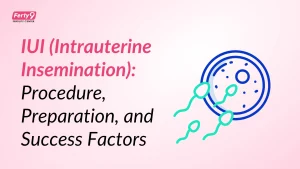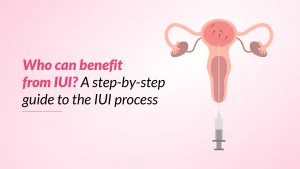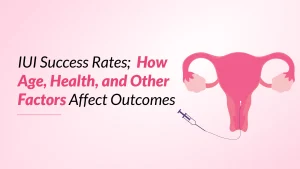Many patients experience stomach cramps after IUI treatment, leading to natural concerns about whether these sensations are normal or indicate a problem. This comprehensive guide examines the causes and implications of post-IUI cramping, helping readers understand when these symptoms are normal and when they might need medical attention. You will learn about different types of cramping, their potential meanings, and effective ways to manage any discomfort.
Is Cramping Normal After IUI?
Experiencing cramping after IUI is an entirely normal and expected part of the treatment process. Doctors confirm that mild to moderate discomfort following the procedure affects approximately 75% of patients undergoing intrauterine insemination.
The presence of stomach cramps after IUI can manifest in several ways, including:
- Mild pulling sensations in the lower abdomen
- Light pressure similar to menstrual cramps
- Occasional twinges or pinching feelings
- Temporary discomfort during movement
-
- Cervical Manipulation: The insertion of the catheter through the cervix can cause temporary irritation and muscle contractions.
-
- Uterine Response: The uterus may contract in response to the introduction of sperm and medical instruments.
-
- Ovulation-related Pain: If the IUI is timed around ovulation, natural ovulation pain may coincide with the procedure.
-
- Hormonal Changes: Fertility medications used before or after IUI can intensify cramping sensations.
-
- Physical Movement: The positioning during the procedure can cause temporary muscle tension.
-
- Immediate Effects: Mild cramping often begins within 15-30 minutes
-
- First 24 Hours: Peak period for stomach cramps after IUI
-
- Days 2-3: Cramping typically begins to subside
-
- Days 4-7: Most patients experience complete resolution of symptoms
-
- Dull, persistent aching in the lower abdomen
-
- Periodic tightening sensations
-
- Mild pressure in the pelvic region
-
- Temporary discomfort during physical activity
-
- Intense, sharp abdominal pain that worsens over time
-
- Fever above 38°C (100.4°F)
-
- Excessive vaginal bleeding beyond light spotting
-
- Severe dizziness or fainting
-
- Difficulty breathing or chest pain
-
- Severe bloating or abdominal swelling
-
- Apply a heating pad on the lower region of the abdomen (no longer than 15 minutes at a time)
-
- Stay hydrated with plenty of water throughout the day
-
- Rest in a comfortable position
-
- Take prescribed pain relief medication if recommended by the doctor.
-
- Practise gentle breathing exercises.
Cramping after IUI is generally short-lived and often resolves on its own within a few days.
Causes of Post-IUI Cramping
Understanding these underlying causes can help patients better manage their expectations and reduce anxiety during the treatment process.
These causes are usually not harmful and are a normal part of the recovery process after IUI.
When Does Cramping Usually Start After IUI?
The timeline of cramping after IUI follows a predictable pattern for most patients, though individual experiences may vary. Most individuals notice the first signs of discomfort within minutes to hours following the procedure.
Lower abdomen pain after IUI may fluctuate in intensity throughout this period, but symptoms generally improve with each passing day.
What Cramping Indicates After IUI
Understanding the different types of cramps after IUI helps patients distinguish between normal physical responses and potential concerns. The sensations experienced during this time can provide valuable insights into the body’s response to the procedure.
Implantation Cramps
Implantation cramps may occur 6-12 days after the IUI procedure when a fertilised egg attaches to the uterine wall. These cramps typically feel like mild, intermittent pinching sensations in the lower abdomen. Unlike immediate post-procedure cramping, implantation discomfort tends to be more localised and may be accompanied by light spotting.
Uterine Lining Changes
The uterus undergoes significant changes following IUI treatment. These modifications can cause distinctive cramping sensations as the uterine lining thickens and becomes more receptive to implantation. Patients might experience:
Side Effects of Fertility Medications
Fertility medications used during IUI treatment can intensify cramping symptoms. Hormone-based medications may cause the ovaries to enlarge slightly, leading to additional pressure and discomfort in the pelvic area. These medication-related cramps often feel more intense than natural menstrual cramps but typically subside as the body adjusts to the treatment.
Understanding Different Types of Pain After IUI
Patients undergoing IUI treatment need to distinguish between expected discomfort and signs that warrant medical attention. While some level of cramping is normal, certain pain patterns may indicate complications that require immediate evaluation.
When to Worry About Severe Pain
Severe pain after IUI treatment requires immediate medical attention, particularly when accompanied by specific symptoms. Doctors advise patients to watch for the following:
Recognising Normal vs. Abnormal Symptoms
Normal symptoms typically include mild to moderate cramping post-IUI that gradually improves over time. These sensations often feel similar to menstrual cramps and respond well to over-the-counter pain relief. Lower abdomen pain after IUI should remain manageable and localised.
Abnormal symptoms include persistent severe pain that interferes with daily activities or worsens over time after IUI. Leg pain combined with severe abdominal cramping might indicate a more serious condition. Cramping after insemination that becomes increasingly intense rather than gradually improving should be evaluated by a doctor.
Also read: Must Know Do’s & Don’ts after IUI procedure
Tips for Managing Post-IUI Discomfort
Managing discomfort after IUI treatment effectively can significantly improve the patient’s experience during this crucial time. Doctors recommend several proven strategies to alleviate stomach cramps after IUI and ensure optimal comfort during the recovery period.
Immediate Relief Measures:
Gentle movement can help reduce cramping post-IUI, though patients should restrict themselves to strenuous activities for the first 24-48 hours. A short, leisurely walk can improve blood circulation and reduce lower abdomen pain after IUI. However, patients should listen to their bodies and not push themselves beyond their comfort level.
Rest
Rest and recovery play crucial roles in managing post-procedure discomfort. Doctors recommend maintaining a regular sleep schedule and avoiding activities that might strain the abdominal muscles. Wearing loose, comfortable clothing can also help minimise pressure on the abdomen and reduce discomfort.
Hydration
Proper hydration & a balanced diet can support the body’s natural healing processes. Warm beverages like herbal tea (avoiding those containing caffeine) can provide additional comfort. Patients experiencing after-IUI leg pain or lower abdominal pain should maintain good posture and avoid prolonged standing or sitting in one position.
Ferty9’s Comprehensive Fertility Services
Find Hope and Solutions for Female Infertility and Male Infertility — Explore Our Comprehensive Services
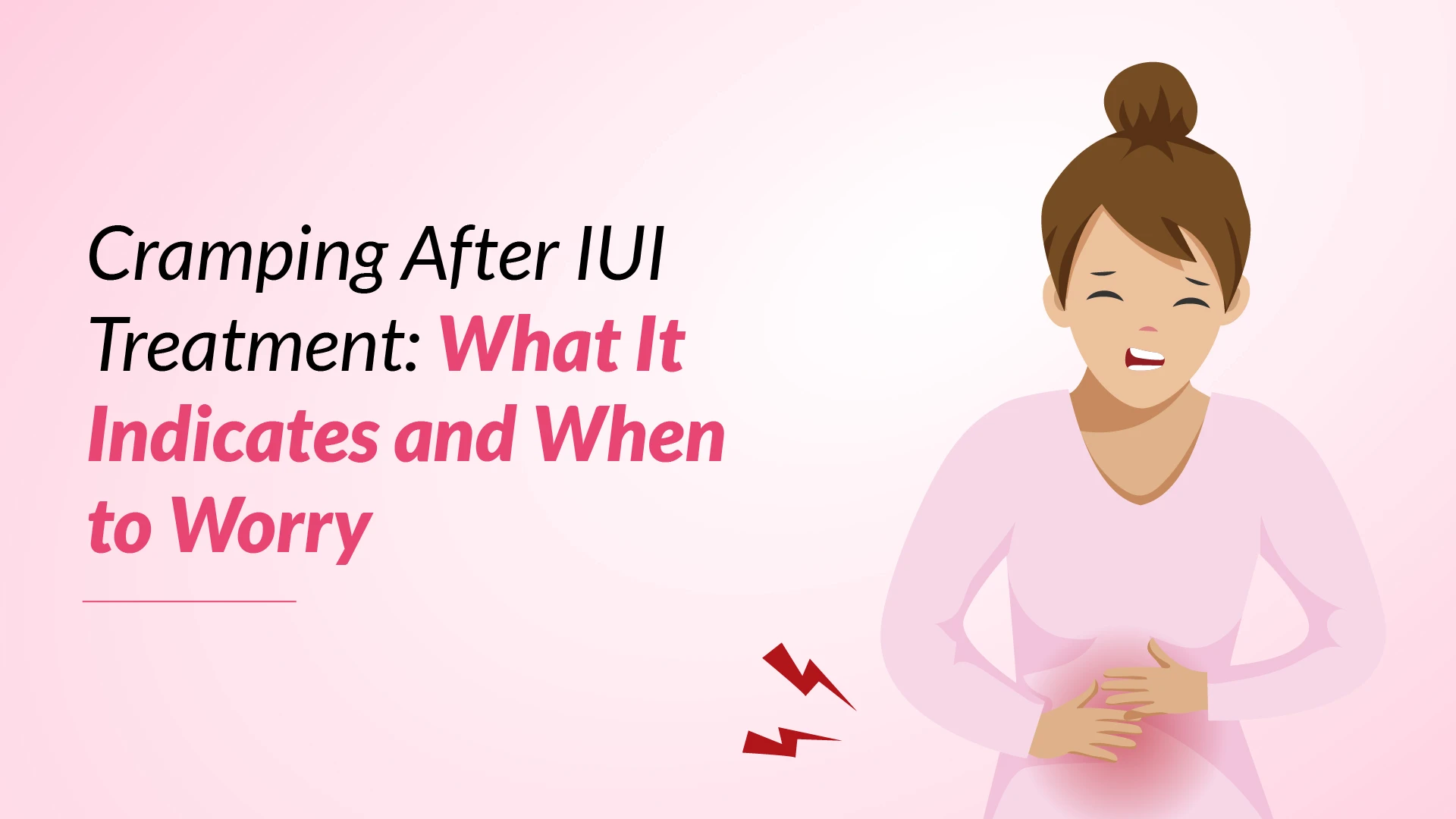
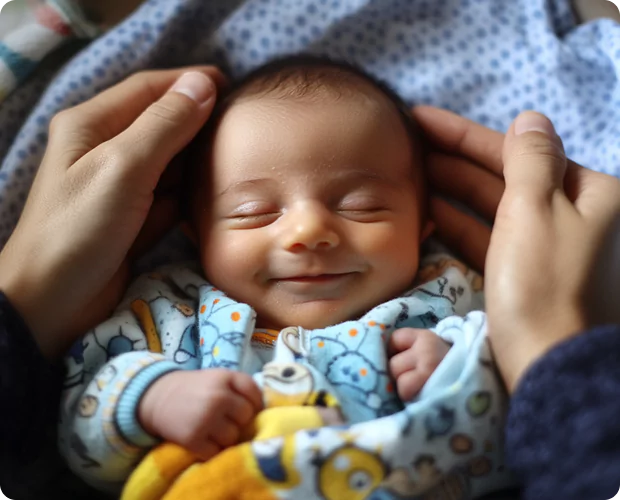
Your Dream of Parenthood Starts Here
Schedule a visit today
Find Hope and Solutions for Infertility Problems
Visit Our Clinic
- Fertility Clinic in Hyderabad
- Fertility Clinic in Kukatpally
- Fertility Clinic in LB Nagar
- Fertility Clinic in Banjara Hills
- Fertility Clinic in Secunderabad
- Fertility Clinic in Visakhapatnam
- Fertility Clinic in Vijayawada
- Fertility Clinic in Karimnagar
- Fertility Clinic in Warangal
- Fertility Clinic in Rajahmundry
- Fertility Clinic in Tirupati
- Fertility Clinic in Kurnool
Frequently Asked Questions
We're Here
To Help
Still have Questions?
Cramping may occur because of the catheter insertion, mild uterine irritation, or natural ovulation-related changes.
Cramping after IUI can happen due to the procedure itself or ovulation. It’s not always a sure sign of pregnancy.
Severe pain requires immediate medical attention, especially when accompanied by fever, heavy bleeding, or intense abdominal pressure. Patients should contact their fertility doctors if the pain becomes severe or persists beyond a week.
Fertility medications can intensify cramping sensations. Different drugs affect patients differently, with hormone-based treatments potentially causing more noticeable effects. These medication-related symptoms typically resolve as the body adjusts.
Physical activity levels and stress can influence the intensity of cramping. Light activity is generally beneficial, but overexertion might increase discomfort. Maintaining a balanced lifestyle with adequate rest helps manage symptoms effectively.
Doctors recommend several effective methods for managing post-IUI discomfort:
- Using a heating pad
- Taking approved pain relievers
- Staying well-hydrated
- Getting adequate rest
- Practising gentle stretching
Cramping neither indicates success nor failure of the IUI procedure. These sensations simply show the body’s natural response to the treatment. Some successful pregnancies involve cramping, while others do not.
Most patients experience cramping for 24-48 hours after the procedure. Some might notice mild discomfort lasting up to 5 days, though this varies among individuals. The intensity typically peaks within the first few hours and gradually diminishes.
